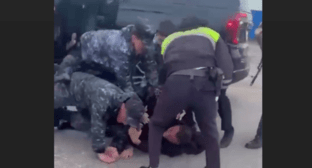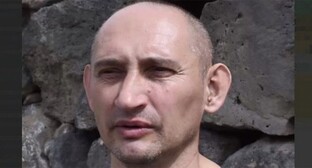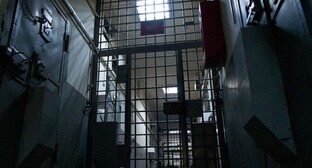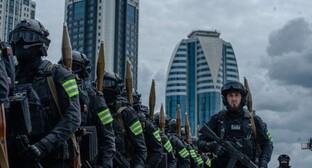23 May 2003, 17:55
Georgian diaspora in Russia
They call themselves kartveli, they are the main population of Georgia. Population in Georgia - 3787,4 thousand people, in Ajaria - 324,8 thousand, in Southern Osetia - 28,5 thousand. They also live in Azerbaijan (14,2 thousand people), in Ukraine ( 23,5 thousand) in Kazakhstan (9,5 thousand), in the north of Turkey and in Iran (Fereidans) - about 120 thousand. The number of Georgians in the Russian Federation is 130,7 thousand people. Georgian language has many dialects; the sub-ethnic groups of Georgians have their own languages: Megrels, Svans (Western Georgia), Lazs (mainly Turkey). The most common religion is Orthodox it was accepted by Georgians in the 4th-6th centuries, part of Georgians (Ajars, groups of Meskhs and Ingiloys are Moslems-sunnits, there are small groups of Catholic Georgians.
The centralized state was formed in the 10-11 century and reached its height in the 12th - beginning of the 15th century; this finished the process of forming the Georgian nation, helped the development of economy and culture, cities and helped to have strong cultural connections with the Western Europe, Russia and the East. After the Tatar-Mongol invasion (the 13th century), the invasion of Timur (second half of the 14th century) since the end of the 15th century there started a long period of decentralization. In the 16-17th centuries the situation got worse as a result of the invasion of the Osman Turkey and the Sefevid Iran. The grounds in the south-west of Georgia - Lazika, Adjaria, Meskhet-Javakheti - were occupied by Turkey. There started the process of Islamisation of Georgian population. This state of political and social-economical stagnation remained in Georgia nearly till the end of the 18th century.
In 1783 Russia and Eastern Georgia (Kartl-Kakhetin kingdom) have signed ?An agreement on friendship? (Georgievsky treaty) that meant the protectorate of Russia over Georgia. But in 1801according to the manifest of Alexander the 1st Georgian kingdom was abolished and Eastern Georgia joined the Russian empire . In 1811 Western Georgia joined Russia as well. Before the end of 1870-ies as a result of the Russian-Turkish wars some historical districts of Georgia joined it - part of Meskhet-Javakheti and Ajaria. In 1918 the Georgian democratic republic was formed, it existed till February 1921 when the Red Army brought here the Soviet power. There was formed the Georgian Soviet Socialist Republic (till 1936 it?s a part of the Transcaucasian federation, then it was part of the USSR). In 1991 Georgia proclaimed its independence and is called the Republic of Georgia). On the territory of Russia Georgians live in Moscow, St. Petersburg, In North Osetia (12,3 thousand people), in Krasnodar territory (12,8 thousand people), in Stavropol territory (6,0 thousand people), in Chechnya (1,0 thousand people), Dagestan (0,9 thousand people).
Russian-Georgian connections and Georgian migrations to Russia took place since the early Middle Ages. In ancient Russian cities there lived Georgian constructors, painters, merchants. Georgian painters participated in the decoration of the Kiev-Pechersk monastery, of the church of Savior-on-Nereditsa in Novgorod (12th century), in the construction of Dmitrovsky cathedral in Vladimir (12th century). The foundation of Georgian colony in Moscow is closely connected with the king of Kakhetia Teimuraz the 1st (beginning of the 17th century). Prince Irakli lived here (Nikolai Davidovich), princes Khokhona and Davitashvili. They had an important position at the court of the tzar Alexei Mikhailovich. They married into the boyar noble families.
The second stage of the history of Georgian colony in Moscow is connected with the king of Imereti and Kakheti Archil the 2nd and his sons. On the invitation of Peter the 1st Archil the 2nd settled in Moscow. His main occupation in Moscow was the organization of Georgian printing. Georgians settled mainly along Nikolskaya street, in the villages Vsesvyatskoye and Pakhra. Georgian settlers quickly adapted to the new ethno-cultural environment and participated in the political and cultural life of Moscow.
The third and the biggest wave of Georgian migration was caused by the king of Kartli Bakhtang VI. He moved to Russia in 1724 after he was defeated in a battle. He was a scientist, a poet, a translator, a founder of printing in Georgia. Vakhtang was given a house of disgraced Dolgorukov on Arbat street and a village Voskresenskoye near Moscow, her e Georgians built a Georgian neighborhood.
The fourth wave of Georgian emigration to Russia took place when Georgia joined Russia in 1801. Members of the royal family were sent to Russia, the representatives of princely and noble families, members of their families and servants. Part of them settled in St. Petersburg, part - in Moscow. The ethnic and cultural appearance of the settlers was changing with time, they changed their family names (Dadiani - Dadianovs, Baratashvili - Baratovs. The surnames and the titles of Bagrationi dynasty were determined by the government: since 1865 the descendants of Irakli II and George XII were named the princes. Russian titles of princes were also received by the princes of Georgia, Imeretia and Mengrel. Georgians often married the representatives of Russian aristocracy. The representatives of Georgian emigration gave Russia a number of great people in the sphere of politics and culture: scientists and specialists on Georgia brothers Bagrationi, N.D. Chubinashvili, Solomon Dodashvili, Grigol Orbeliani, A.A. Tsagareli etc. In St. Petersburg and Moscow there lived the family of Sandukhovs (Zandukeli) - lawyers, playwrights and translators, the constructors of famous Moscow bathhouses.
The representatives of Georgian ecclesiastic management actively participated in Russian religious life. In 1715 L. Gabashvili became the archimandrite of Donskoy monastery in Moscow. In 1734-1741 the head of Novgorod eparchy was Josef Samebeli, he stared the construction in the Yurievsky monastery. In his surrounding there was the organizer of Georgian printing Father Superior Christopher Gumanishvili. There was a big Georgian colony in Astrakhan. The church of the Nativity of the Virgin was given to the Georgian population, the service there was conducted by Georgian priests.
Georgian centers appeared in the North Caucasus in 1722-1725, part of the people following Vakhtang VI to emigration stayed by the Caspian sea. Captured Georgians, Armenians, Russians were running away to the Russian border fortresses Svyatoy Krest and Derbent. The main Georgian settlements in the North Caucasus appeared in the towns of Kizlyar and Mozdok. Georgians also live in the Tersk villages.
Nowadays the main part of Georgian diaspora in Russia lives in the cities (in 1989 - 110,6 thousand people, that is 84,5%): in Moscow (19,6 thousand), Saint-Petersburg (17,8 thousand), Vladikavkaz, Krasnodar. Being involved into the city (?European?) culture, most of the Russian Georgians keep the national self-consciousness and Georgian language (more than 70 % consider it their native language). Many Georgians became well-known figures of modern Russian culture. Among them are: the writer Irakli Andronikov and Bulat Okujava, the film producer Georgi Danelia, actor Oleg Basilashvili, ballerina Nina Ananiashvili etc. Recently in many Russian cities there were founded Georgian national cultural centers, societies, friendly associations of people from same area (for example, in Moscow - ?Mziuri?, ?Georgian friendly association?, ?Ajaria?), nursery schools and schools where some subjects are taught in Georgian language.
Between the Moscow Patriarchy and the Georgian Orthodox Church there are traditional relations of brotherhood, friendship and mutual consent.




